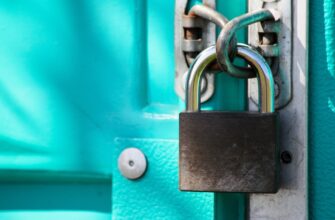- Why Offline Private Key Anonymization Matters More Than Ever
- Low-Cost Tools for Offline Private Key Anonymization
- Step-by-Step: Anonymize Private Keys Offline for Under $50
- Critical Best Practices for Maximum Security
- Deadly Pitfalls to Avoid During Offline Anonymization
- FAQ: Offline Private Key Anonymization on a Budget
Why Offline Private Key Anonymization Matters More Than Ever
In today’s digital landscape, securing cryptocurrency assets demands ironclad protection against hackers, malware, and surveillance. Anonymizing your private keys offline isn’t just a best practice—it’s a non-negotiable shield for your digital wealth. By processing keys in an air-gapped environment (completely disconnected from the internet), you eliminate remote attack vectors while maintaining privacy. Best of all, achieving this doesn’t require expensive enterprise solutions. This guide reveals practical, low-cost methods to anonymize private keys offline, putting impenetrable security within everyone’s reach.
Low-Cost Tools for Offline Private Key Anonymization
You don’t need a security budget to build a fortress. These affordable solutions leverage everyday technology:
- Raspberry Pi ($35-$75): Transform this credit-card-sized computer into a dedicated offline key generator. Wipe its OS, install Linux, and never connect it to networks.
- Old Laptops/Phones (Free/Repurposed): Devices with broken Wi-Fi or removed network cards become perfect air-gapped workstations. Factory reset first.
- Paper Wallets (Under $5): Generate keys offline via tools like BitAddress, print on durable paper, and laminate. Store in fireproof containers.
- Hardware Wallets ($50-$150): Budget options like Ledger Nano S offer offline key generation with tamper-proof chips.
- Bootable USBs (Free): Use Tails OS or Ubuntu Live USB to boot any computer into a temporary, network-free environment.
Step-by-Step: Anonymize Private Keys Offline for Under $50
Follow this low-cost method using a Raspberry Pi (requires microSD card, power supply, and HDMI monitor):
- Download Raspberry Pi OS Lite image on an online computer and flash to microSD using BalenaEtcher.
- Before booting, remove Wi-Fi dongles/Ethernet cables. Connect only power and monitor.
- Boot Pi, create new user, and disable all networking services via terminal:
sudo systemctl disable networking - Install open-source key generator:
sudo apt install bitaddress - Run BitAddress locally. Move mouse randomly to create entropy, then generate keys.
- Write keys on paper or encrypt to USB (never saved on Pi’s storage). Power off and dismantle setup.
Critical Best Practices for Maximum Security
- Physical Isolation: Perform all operations in a room without phones/Bluetooth devices to prevent electromagnetic snooping.
- Multi-Layer Verification: Cross-check generated addresses across two offline devices before funding.
- Stealthy Storage: Split paper wallets into Shamir Secret Shares stored in geographically separate locations.
- Zero Digital Traces: Wipe temporary devices with Darik’s Boot and Nuke (DBAN) after use.
- Regular Audits: Test recovery annually using public address data only—never expose private keys.
Deadly Pitfalls to Avoid During Offline Anonymization
- “Temporary” Online Checks: Never validate keys by pasting into online blockchain explorers—use offline block headers instead.
- Compromised Source Code: Verify checksums of keygen tools against multiple repositories before going offline.
- Poor Entropy Sources: Avoid keyboard-only randomness; combine mouse movements + hardware noise generators.
- Unsecured Physical Access: Don’t leave unattended devices mid-process. Use privacy screens.
- Ignoring Coin-Specific Risks: Some coins (e.g., UTXO-based) require unique address formats—research before generation.
FAQ: Offline Private Key Anonymization on a Budget
Q1: Can I truly anonymize keys for free?
A: Absolutely. Tools like Electrum or BitAddress run offline in browsers on air-gapped machines. Combine with recycled hardware for zero cost.
Q2: How does offline anonymization differ from cold storage?
A: Cold storage keeps keys offline but doesn’t necessarily anonymize them. Offline anonymization ensures keys are generated and handled without digital footprints or metadata leaks.
Q3: Are paper wallets still safe in 2024?
A: Yes, if created correctly offline using trusted software and stored physically. However, hardware wallets offer better durability against environmental damage.
Q4: Can smartphones be used securely for this?
A: Only if permanently stripped of connectivity (remove SIM/Wi-Fi chips) and factory reset. Dedicated devices like old Android phones with “Airplane Mode + Wi-Fi Removal” work.
Q5: What’s the biggest risk in low-cost setups?
A: Human error—like accidentally connecting devices to networks or mishandling physical backups. Always triple-check isolation protocols.








